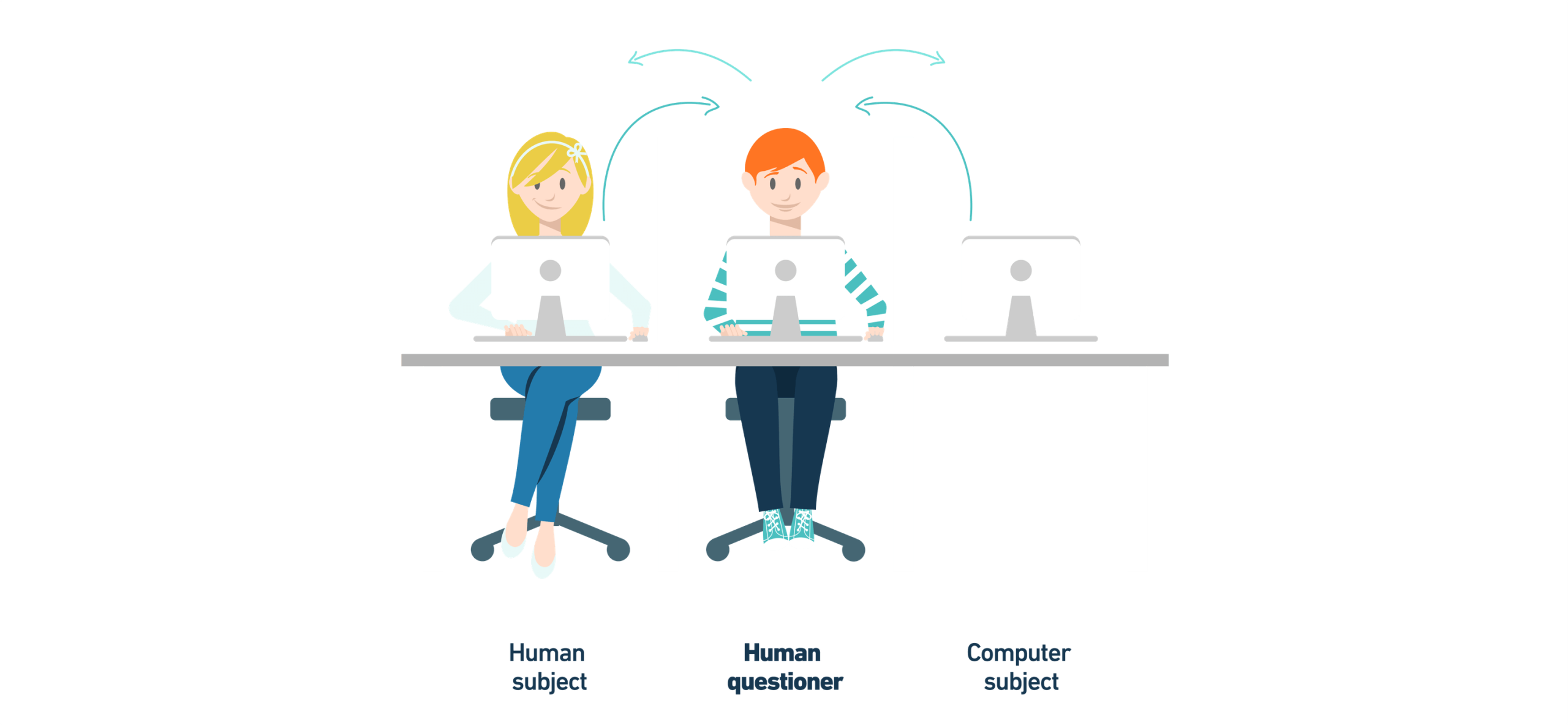As a design guru, the software developer delves into logistics service providers' requirements like no other. He is passionate about exchanging information securely and efficiently and thus speeding up the physical logistics process.


“If I had asked people what they wanted, they probably would have said faster horses.” Henry Ford, the automotive pioneer to whom this quote is attributed, uses these words to describe how progress sometimes seems unimaginable – and that it takes people who truly think “out of the box” to develop groundbreaking technologies. That’s how our world changes – constantly and always. Sometimes we notice it more, sometimes less. It’s the same with artificial intelligence (AI).
In our EIKONA Logistics Cloud, we offer the right logistics solution for all your requirements. Combine the modules individually as you need it for your supply chain.
The use of ChatGPT by the masses has recently made an impact in the field of artificial intelligence – perhaps you have already asked the intelligent chatbot for help with a presentation or for good restaurant tips in an unfamiliar city. But it’s not just in the private sphere that AI has brought some groundbreaking optimization opportunities so far – they can equally be found in the industrial environment, specifically in logistics.
Basically, something like “pinpoint flexibility” is required of logistics due to volatility, fluctuations in demand, and ever-expanding global networking – well, nothing simpler than that! Fortunately, it is also ideally suited to the use of digitization and applications based on artificial intelligence. After all, logistics companies are largely concerned with optimal planning: orders and capacities have to be planned, for which a meaningful demand forecast is important. The optimal storage of goods also needs to be well planned in order to avoid errors and act as efficiently as possible. We show how software and digitization benefit from AI and how future technology can support logistics in the long term.
According to the Turing test, a computer is said to be intelligent as soon as a human interacting with it can no longer distinguish whether it is communicating with another human being or a machine. Alan Turing also predicted as early as the 1950s that only learning machines would be able to develop truly intelligent behaviour. Machine learning is thus a subfield of AI. However, while machine learning requires a programmer to make any adjustments, deep learning uses artificially generated neural networks to recognize patterns. In this way, the algorithms themselves determine whether certain decisions are right or wrong – the software thus learns unsupervised.
Applied concretely to the supply chain, this means the following: Applications in which deep learning is implemented are able to recognize certain patterns in supply chain data and identify their influencing factors. This way, the algorithm is constantly learning and can make increasingly precise forecasts and recommendations regarding certain routes and processes in transport, for example.
The Turing Test is a test proposed by the British mathematician and computer scientist Alan Turing in 1950. The aim of this test is to determine whether an artificial intelligence (AI) or a computer program is able to imitate human behaviour so convincingly that an observer can no longer distinguish between a machine and a human interlocutor.

The test usually consists of a text-based chat in which a human (the tester) communicates with two partners: another human and a machine. The tester does not know which of the two parties is the machine. The purpose is that the tester asks questions and, based on the answers, has to decide whether he is talking to a human or a machine. If the machine can convince the tester and the tester is unable to distinguish the machine from a human, it is considered to have "passed" the Turing test. The test is considered a kind of milestone for the development of artificial intelligence and serves as a benchmark for assessing progress in this field.
However, it is important to transmit data from as many supply chain-devices as possible. This is where the Industrial Internet of Things (IIoT) comes into play. In contrast to the Internet of Things (IoT), which refers to a consumer-oriented environment, the IIoT describes the manufacturing industrial environment, i.e., exclusively devices and systems used in production and logistics. Mobile devices connected in an IIoT network are equipped with sensors and unique identifiers so they can send and receive digital data. They can thus communicate with the central system, where the data is analyzed and interpreted using AI. This enables intelligent automation of workflows and processes.
The understandable concern that AI will in the long run take over many activities currently performed by humans need not be well-founded. Humans and AI – that is no contradiction, on the contrary, human safety can be increased through the use of artificial intelligence. For example, physically demanding work can be performed by machines, while skilled personnel are increasingly trained to make strategic decisions. In addition, sensors worn by employees at work can identify optimization potential in movement sequences. Should an employee show signs of fatigue, the sensors detect this and issue a recommendation for a break – many are familiar with this system from driving, where it has long been used. Errors and accidents can thus be better avoided, which increases overall efficiency.
Real-time status updates, planning security and reliable forecasts – that’s what matters most when it comes to resilient supply chains. Modern databases and self-learning algorithms help enormously by correlating data from different sources and deriving specific recommendations for action. AI is already being used in these areas in many companies today, thereby optimizing a wide variety of processes in transport and logistics:
The tasks that arise in logistics every day are extremely diverse – but at least equally as diverse are the possible applications of artificial intelligence. Already today, AI can be used in logistics to predict demand, plan orders and capacities, and optimally store transport goods. Resources can thus be used more efficiently, while work that is harmful to health as well as routine activities are increasingly being taken over by machines. Human capabilities can thus be used in a more targeted manner. Respect for new technologies and the changes they bring is certainly appropriate, but one thing should be clear: Transformation can only be stopped in the rarest of cases. That’s why it’s worth exploiting the potential of AI for logistics and thus positioning oneself in a way that is both more tailored and more flexible.